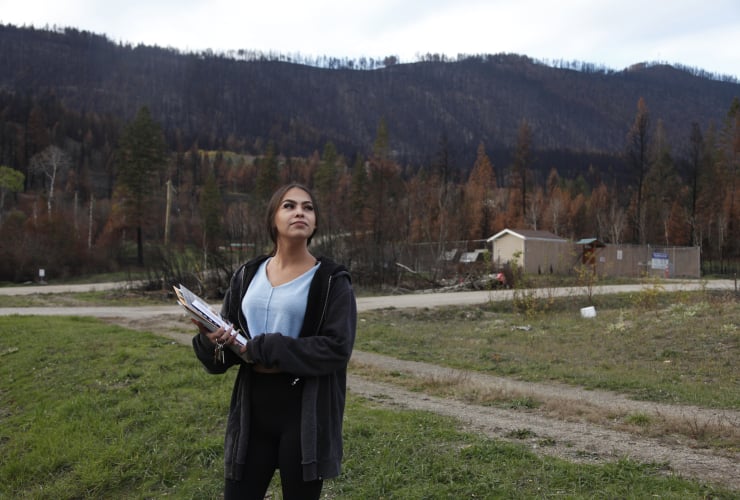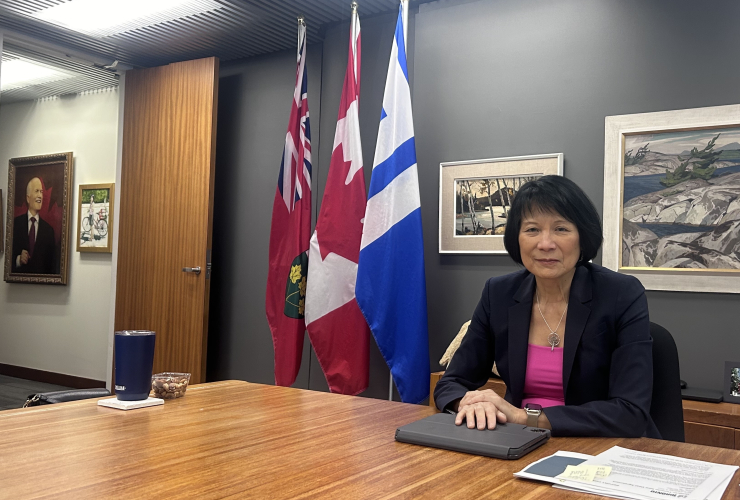Support journalism that lights the way through the climate crisis
When Brenden Mercer worked the attack lines as a forest firefighter, he was sent into the deep reaches of the bush with nothing but trees in sight.
It left a profound impression and greatly influenced his future work helping First Nations prepare for emergencies like catastrophic wildfires. He came away thinking the approach to emergency management should change. Communities must come first.
“Communities are on fire. Communities need help,” Mercer said. “That's where we should focus our efforts: protecting people, protecting homes, not five trees in the middle of nowhere.”
Later, Mercer found a role that reflected his beliefs. He found a job with the First Nations Emergency Services Society. FNESS, for short, helps B.C. First Nations with emergency management through a four-pillar system of preparedness, mitigation, response and recovery.
He spoke with Canada’s National Observer at the recent Assembly of First Nations Special Chiefs Assembly. It was fitting to find him there. FNESS originated at the assembly in 1986. The organization, then called the Society of Native Indian Firefighters, aimed to reduce the number of on-reserve fire deaths through education and safety programming.
Now, FNESS has expanded, covering everything from wildfires to floods and even non-climate-related emergencies. The organization is one-of-a-kind on the continent, Mercer said.
The goal at the assembly was to spread the word about their emergency services model with First Nations countrywide, he explained. From the beginning of Mercer’s tenure at FNESS, he’s picked up and shared knowledge to ensure First Nations can more easily succeed.
“There are so many barriers in emergency management, and for small, remote communities, navigating every different aspect is unbelievably complicated,” he said.
One of the barriers for First Nations is administrative capacity, Mercer noted. Often, emergency management grants are being worked off the side of someone’s desk, amidst a stack of other files like education, environment or economic development.
Now, an important role for FNESS is helping with climate mitigation funding doled out by Ottawa or Victoria, B.C. The funds are often awarded in a project-based format with strict deadlines and parameters. Two years ago, only three per cent of the provincial support went to First Nations. That amount rose to 47 per cent with the help of FNESS, Mercer said. FNESS is now also helping First Nations in B.C. complete 20 mitigation projects that a federal audit identified as unfinished by Indigenous Services Canada.
The approach starts with data and the application Mercer built that centralizes all relevant information for emergency management. The one-stop platform helps First Nations create maps using satellite and drone information during wildfire or flood season to track climate activity or help write grant applications.
In addition, the platform run by FNESS remains under First Nations’ control. Previously, sensitive data could be taken by consultants or governments without proper consent, or First Nations could be charged for access to their own data, Mercer said.
It’s a platform Mercer built from the ground up while working full-time. Mercer is now working toward a PhD in applying machine learning to emergency management, all in the service of preparing First Nations for climate disasters.
Emergency management is the “wild west” for First Nations data, so it’s especially important to ensure proper handling of the information, he explained.
“The biggest thing is just listening to our communities and giving them tools that they asked for to help with different parts of emergency management.”
FNESS also helps First Nations in B.C. with cultural burning, the ancestral practice of lighting low-intensity fires early in the season where the risk of an uncontrolled fire is low. A burn last spring, led by ʔaq’am First Nation near Cranbrook, was the largest in the province for decades, covering around 1,200 hectares, Mercer said.
It was not welcomed by everybody. In the local newspaper, a column criticized the burn as malpractice and complained about suffocating smoke. However, later in the summer, it helped stop a wildfire and prevented the loss of critical infrastructure, including a local airport and several homes.
“Everybody in the community afterward realized how important that cultural burn was,” he said.
Matteo Cimellaro / Canada’s National Observer / Local Journalism Initiative






Comments